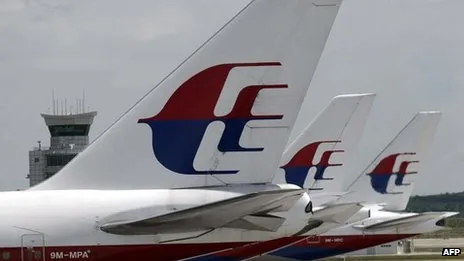
Malaysia to take eight Boeing 787s
Sep 13, 2017

Malaysia is set to enhance its aviation capabilities with the acquisition of eight Boeing 787 aircraft, reflecting its commitment to modernize its fleet and improve passenger experiences. These advanced, fuel-efficient jets will enable the country to expand its international connectivity and support tourism growth. The Boeing 787, known for its spacious interiors and reduced environmental impact, will also help Malaysia Airlines attract more travelers by offering greater comfort and lower operational costs. This strategic move aligns with Malaysia's broader goals of strengthening its position in the competitive global aviation market while fostering economic development through enhanced air travel options.
The decision by Malaysia to acquire eight Boeing 787 aircraft marks a significant step in enhancing the country's aviation capabilities. The Boeing 787, known for its fuel efficiency and advanced technology, is set to play a crucial role in Malaysia’s strategy to expand its international flight offerings. This acquisition aligns with the broader trend of airlines investing in modern fleets to meet increasing passenger demand and environmental standards.
The Benefits of Boeing 787 Aircraft
The Boeing 787, also known as the Dreamliner, is equipped with a range of features that make it an attractive choice for airlines. Here are some of the major benefits:
- Fuel Efficiency: The 787 is designed to consume 20% less fuel than previous models, significantly reducing operating costs for airlines.
- Passenger Comfort: The aircraft features larger windows, improved cabin pressure, and quieter engines, enhancing the overall flying experience for passengers.
- Range Flexibility: With a range of up to 7,530 nautical miles, the 787 allows airlines to operate long-haul routes without the need for refueling stops.
Malaysia's Strategic Investment
This decision to take on eight Boeing 787s is part of Malaysia's broader strategy to modernize its fleet and enhance its position as a key player in the aviation sector. The acquisition is expected to:
- Expand Route Networks: The new aircraft will allow Malaysian airlines to open new routes, particularly to long-haul destinations.
- Boost Tourism: With more international flights, Malaysia aims to attract a larger number of tourists, contributing to the country's economy.
- Enhance Competitiveness: Modernizing the fleet with the latest technology will help Malaysian airlines compete more effectively with other regional carriers.
Financial Implications
The financial aspect of acquiring the Boeing 787s is crucial. Here’s a breakdown of estimated costs and potential returns:
| Item | Estimated Cost (USD) | Potential Annual Savings |
|---|---|---|
| Acquisition Cost (8 Aircraft) | 2.4 Billion | N/A |
| Fuel Savings per Year | N/A | 200 Million |
| Maintenance Savings per Year | N/A | 50 Million |
| Total Estimated Annual Savings | N/A | 250 Million |
These figures illustrate the financial viability of the investment in Boeing 787s. The potential savings from fuel and maintenance can significantly offset the initial acquisition costs over time.
Environmental Considerations
As the aviation industry faces increasing scrutiny regarding its environmental impact, the choice of the Boeing 787 aligns with global sustainability goals. The aircraft's fuel efficiency contributes to lower carbon emissions, which is crucial for airlines aiming to meet international environmental standards. Malaysia's decision to invest in such an eco-friendly aircraft demonstrates its commitment to sustainable aviation practices.
Conclusion
The acquisition of eight Boeing 787 aircraft by Malaysia is a strategic move that promises to elevate the country’s aviation sector. With benefits ranging from enhanced passenger comfort to significant operational cost savings, the Boeing 787 presents a compelling case for modernizing fleets. Furthermore, the investment underscores Malaysia's dedication to sustainability and competitiveness in the global aviation market.
As this acquisition unfolds, the aviation community will be keenly observing how Malaysia leverages its new fleet to enhance connectivity, boost tourism, and foster economic growth. The successful integration of the Boeing 787s could set a benchmark for other nations looking to modernize their aviation infrastructure.
Related Articles

Explore Thailand: The Best Islands to Visit for Paradise, Adventure, and Relaxation

The Ultimate Guide to the Best Islands in Thailand for Your Next Getaway

Do babies need passports? How to get a passport for a newborn

How to get a U.S. passport fast: here’s how to expedite the process

What is Mobile Passport Control: 5 reasons why you should use it

SENTRI vs. Global Entry: A detailed guide

Do you need a passport to go to the Bahamas? Let’s find out

Do you need a passport to go to Mexico? A detailed guide

Do you need a passport to go to Canada? We got the answer

Do You Need a Passport for a Cruise: An Essential Travel Guide

Booster Seat Requirements: All the Rules to Follow in Your Rental Car

What Are the World’s Most Powerful Passports, and How Does Yours Rank?

How to Take a Passport Photo at Home: A Helpful Guide

You've got to have heart! Southwest's new livery

Your opinion: Should water be free on low cost carriers?

Young women bolder than guys as solo travellers
